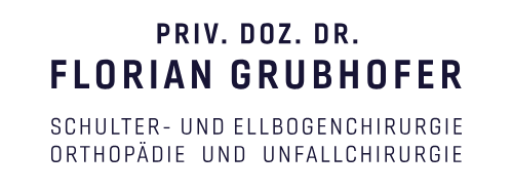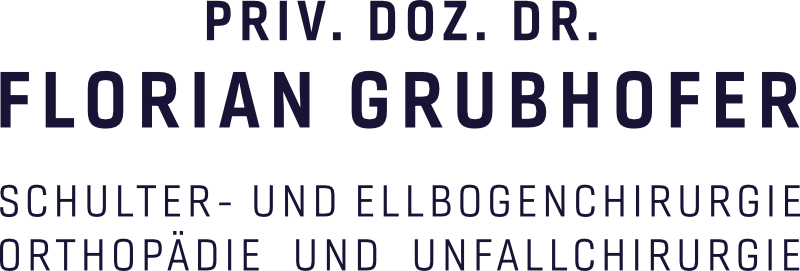Why is the shoulder commonly affected by instability?
The shoulder joint is the most mobile joint in the human body. Its bony socket, called the glenoid, is approximately four times smaller than the bony head, the humeral head, leading to a significant mismatch. To compensate for this, nature has equipped the shoulder with a labrum, a ring of cartilage that surrounds the glenoid 360° to increase the joint surface area. Additionally, the labrum anchors the joint capsule, a structure made of collagen fibers that provides support and prevents instability. This capsule is reinforced by three ligaments at the front and additional reinforcement in the lower rear area. However, due to the minimal bony stability, the shoulder joint is particularly susceptible to instability, especially under significant force, such as during accidents, in cases of congenital tissue weakness, or when collagen stability is naturally reduced.
What are the different types of shoulder instability?
Shoulder instability is classified into two main types: traumatic and atraumatic.
1. Traumatic Shoulder Instability:
• Anterior Traumatic Instability:
This is the most common type and typically results from an accident, such as a fall, leading to shoulder dislocation (luxation). This often causes a characteristic injury pattern, including a tear of the labrum, called a Bankart lesion. Additionally, the humeral head may develop an indentation on its posterior-superior part due to impact with the glenoid rim, known as a Hill-Sachs lesion. These injuries are common in anterior-inferior traumatic dislocations as the shoulder moves in the direction of least resistance under significant force.
• Posterior Traumatic Instability:
This is less common and typically occurs after high-impact injuries, such as electric shocks or epileptic seizures. Strong muscle contractions of the large trunk muscles, particularly the latissimus dorsi, result in posterior dislocation of the humeral head.
2. Atraumatic or Congenital Instability:
This type occurs due to insufficiently tight ligaments and capsules, which may be biologically determined. Some individuals have increased collagen laxity, leading to insufficient stability of the shoulder joint, a condition referred to as congenital instability. This type often affects both shoulders and may also involve other joints such as the fingers, elbows, ankles, or patellofemoral joint (between the kneecap and thigh bone). Congenital or habitual instability is typically multidirectional, meaning it can occur in all directions (anterior, posterior, and inferior).
How is traumatic shoulder instability treated?
When a shoulder dislocation occurs, it is crucial to reduce (reposition) the joint back into place. This can be attempted once by a medically trained professional outside of a hospital. If unsuccessful due to excessive pain or difficulty, further attempts should not be made. Instead, emergency services should be contacted to perform the procedure in a hospital setting.
If a fracture is suspected, radiological imaging must be conducted before reduction to ensure no fracture is present. If a fracture exists, there should be the option for surgical treatment, as the reduction maneuver may cause additional displacement of the fracture.
Before reduction, the function of the axillary nerve must be evaluated for sensation and movement, as this nerve is commonly affected or damaged during the injury. This examination is critical and should be documented.
For simple dislocations (without fracture), the joint is immobilized in a sling for six weeks post-reduction. Only pendulum exercises are permitted during this time to allow the injured capsule and any bony structures to heal.
After six weeks, free movement therapy can begin, avoiding specific movements such as the combination of abduction and external rotation in anterior-inferior dislocations for a total of 12 weeks. After this period, full range of motion and load-bearing activities can typically resume.
Patients should be informed that joint stiffness and reduced mobility are expected due to immobilization, which helps stabilize the joint for healing. This stiffness can be resolved through physical therapy over weeks or months.
The shoulder’s stability should be evaluated at 12 and 24 weeks post-dislocation. If no instability or recurrent dislocation occurs during these checks, surgery is usually unnecessary.
However, if there are recurring dislocations or persistent instability symptoms, surgical stabilization may be required.
The likelihood of recurrent dislocations depends on the patient’s age at the time of the first dislocation:
• Under 20 years old: ~70% chance of recurrent instability.
• Over 20 years old: ~30% chance of recurrent instability.
What are the surgical options for traumatic shoulder instability?
Two primary procedures are commonly used:
1. Latarjet Procedure:
This procedure mechanically enlarges the bony glenoid in the area of instability (typically anterior-inferior) using an adjacent bone piece called the coracoid. The goal is to prevent recurrent dislocations in this region.
• Procedure:
• The coracoid is harvested and fixed to the anterior-inferior glenoid with two screws.
• Two tendons originating from the coracoid (short head of the biceps and coracobrachialis) provide additional stability.
• A ligament (coracoacromial ligament) is detached from the coracoid and sewn to the joint capsule to enhance stability further.
• Advantages:
• Lower recurrence rates compared to the Bankart procedure.
• Disadvantages:
• Larger scar and potential complications (nerve injury, bone graft failure).
The Latarjet procedure is preferred due to its reliable and reproducible stabilization outcomes compared to the Bankart procedure. The surgery typically lasts about 60 minutes, and the resulting ~5 cm scar is generally not bothersome to patients. For women, the incision can be made to align with bra or bikini straps for concealment.
2. Bankart Procedure:
This arthroscopic procedure restores stability by repairing damaged soft tissues.
• Procedure:
• Torn labrum and capsule are reattached to the glenoid using suture anchors.
• Limitations:
• Higher recurrence rates compared to the Latarjet procedure.
• Suitable for patients without significant bone defects or chronic instability.
While the Latarjet procedure offers more reliable results, both options have specific indications and should be tailored to the patient’s needs.
How is congenital or habitual shoulder instability treated?
Congenital and habitual shoulder instabilities, often characterized by frequent episodes, are challenging to manage surgically. The primary treatment strategy is functional therapy to optimize coordination between the glenoid and humeral head.
Physiotherapy focuses on:
• Coordination training to improve movement control.
• Proprioception training to enhance joint awareness.
Surgery is generally not the first-line treatment and is only considered if functional therapy fails and a primary instability direction is identified. Surgical outcomes for congenital instability are less predictable, and patients should have realistic expectations.
Possible surgical options include:
• Tightening the capsule-labrum structures for increased stability.
• Glenoid augmentation with bone grafts in cases with a defined instability direction.
Compared to traumatic instability surgeries, outcomes for congenital instability surgeries are less reliable. These limitations should be thoroughly discussed with the patient before proceeding.

